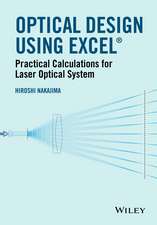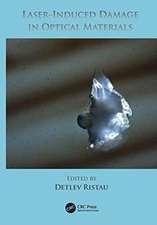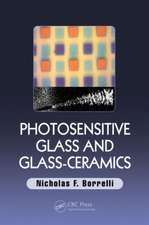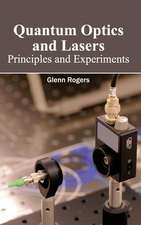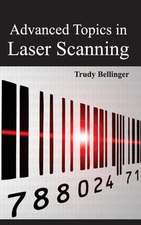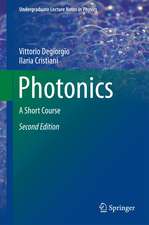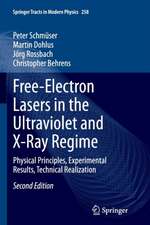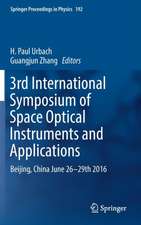CO2 Laser Cutting
Autor John Powellen Limba Engleză Paperback – iun 1998
Preț: 888.80 lei
Preț vechi: 1083.90 lei
-18% Nou
Puncte Express: 1333
Preț estimativ în valută:
170.09€ • 177.35$ • 141.36£
170.09€ • 177.35$ • 141.36£
Carte tipărită la comandă
Livrare economică 21 martie-04 aprilie
Preluare comenzi: 021 569.72.76
Specificații
ISBN-13: 9781852330477
ISBN-10: 1852330473
Pagini: 268
Ilustrații: XVII, 248 p. 33 illus.
Dimensiuni: 155 x 235 x 14 mm
Greutate: 0.38 kg
Ediția:Softcover reprint of the original 2nd ed. 1998
Editura: SPRINGER LONDON
Colecția Springer
Locul publicării:London, United Kingdom
ISBN-10: 1852330473
Pagini: 268
Ilustrații: XVII, 248 p. 33 illus.
Dimensiuni: 155 x 235 x 14 mm
Greutate: 0.38 kg
Ediția:Softcover reprint of the original 2nd ed. 1998
Editura: SPRINGER LONDON
Colecția Springer
Locul publicării:London, United Kingdom
Public țintă
ResearchCuprins
1. The Basic Principles.- 1.1 The Cutting Process.- 1.2 How Materials Respond to Laser Light.- 1.3 How CO2 Lasers Work.- 1.4 Laser Modes.- 2. Laser Cutting Steels.- 2.1 Mild steels.- 2.2 Alloy Steels.- 3. Cutting Non-ferrous Metals.- 3.1 Introduction.- 3.2 Titanium Alloys.- 3.3 Aluminium Alloys.- 3.4 Nickel Alloys.- 3.5 Copper Alloys.- 3.6 General Comments.- 4. Cutting Non-metals.- 4.1 Introduction.- 4.2 Polymers.- 4.3 Wood Based Products.- 4.4 Ceramics and Glasses.- 4.5 Composites and Miscellaneous Materials.- 5. Setting Up for Cutting.- 5.1 Introduction.- 5.2 Beam Alignment.- 5.3 Finding the Focus Position.- 5.4 Nozzles and Nozzle Alignment.- 5.5 Jigging.- 5.6 Tuning the Laser.- 6. Troubleshooting.- 6.1 Introduction and Checklist.- 6.2 Notes on Checklist.- 7. Safety Guidelines.- 7.1 Introduction.- 7.2 Beam Exposure.- 7.3 Fumes.- 7.4 Electrocution.- 7.5 Fires.- 8. Alternative Cutting Methods.- 8.1 Nd:YAG Laser Cutting.- 8.2 Plasma Arc Cutting.- 8.3 Abrasive Water Jet Cutting.- 8.4 Oxygen—Flame Cutting.- 8.5 A Summary of the Strengths and Weaknesses of Each Process Compared with CO2 Laser Cutting.- 9. The Physics and Design of CO2 Lasers.- 9.1 Introduction.- 9.2 The Physics of CO2 Lasers.- 9.3 Aspects of the Design of CO2 Lasers.- 10. Some Aspects of the Physics and Chemistry of Laser Cutting.- 10.1 Introduction.- 10.2 The Energy Balance in the Cut Zone and Its Relationship to the Efficiency of the Process.- 10.3 The Role of Oxidation when Cutting Steels.- 10.4 Conductive Losses Experienced when Cutting Steels.- 10.5 Notes on Reflected, Transmitted, Radiated and Convective Losses from the Cut Zone.- 10.6 Notes on the Focusing Characteristics of CO2 Lasers.- 11. Bibliography and Further Reading.- 11.1 Conference Proceedings and Journals.- 11.2 Books.- 11.3 SpecificPapers.- 11.4 Miscellaneous References.- 11.5 Further reading update for the second edition of this book.
Caracteristici
One of the only books available on this subject Successfully combines solid information with a readable, accessible style Is both practical and technical - giving it appeal to both hands-on operators and researchers



